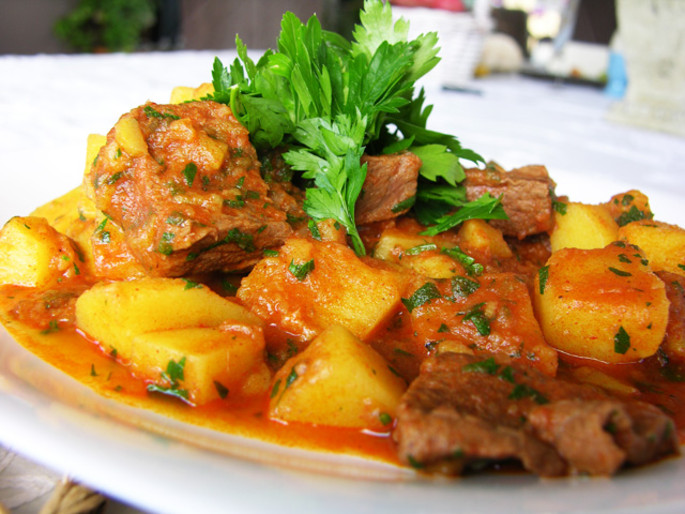If the high society had at his disposal an extravagant cuisine, the commoners lived a life in which the gastronomic rules followed strict canons imposed by the church and by the succession of the seasons.
The traditional diet contained the basic foods, staple foods, seasonal foods and occasional foods.
The staple foods were wheat and corn. The bread was the staple food in areas rich in cereals, while the cornmeal mush was consumed where land did not allow the wheat culture, or where for convenience wheat was replaced by corn.
The main foods, except the fasting days and periods, imposed by the church, were the meat and animal fats, milk and dairy products, with the addition of vegetables, spices and fruits.
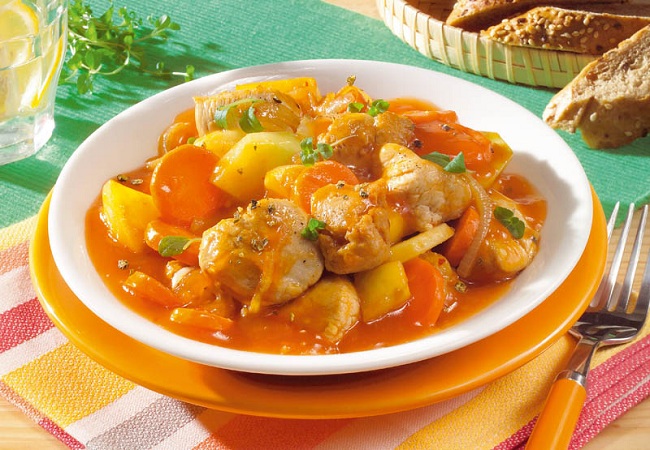
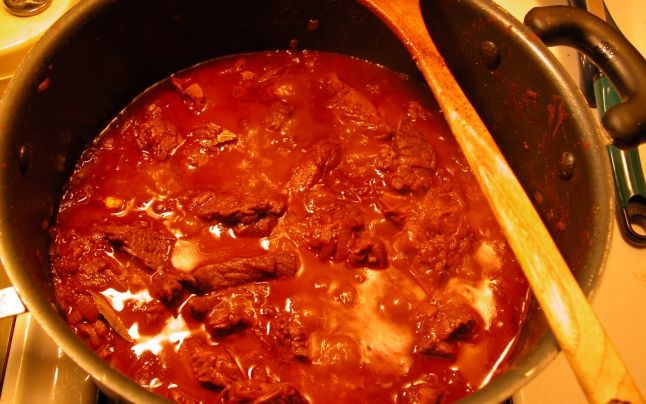
Meat consumption was organized in each family by the traditional sacrifice of animal, according to the season and major holidays: the pig for winter, lamb for spring, poultry and for summer and sheep for autumn.
The pigs provided the main products of meat and fat used in the preparation of food during the year. A part of the pork was preserved by the method of the brine or smoked, while the smaller pieces were ground and used in the preparation of cârnaţi, a kind of sausages.
The caltaboş was prepared from the liver, caşul de porc or toba from the head and paws, sângerete from the blood.
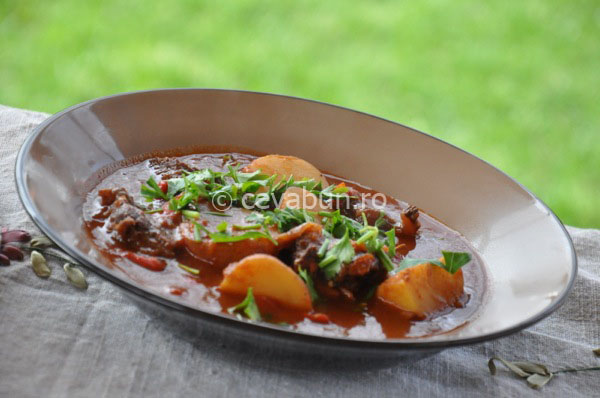
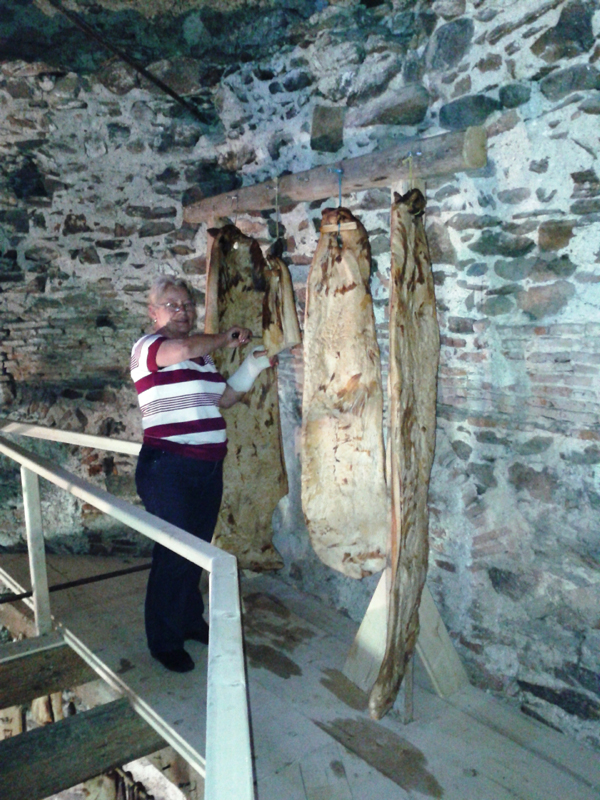
With regard to the lard, with a part smoked and a part held in brine, it was a staple food that should suffice until next winter. The lard was eaten with onion, garlic and raw or pickled cucumbers; if it was too fat, it was fried and on a slice of bread they put the grounded onion on which they put melted fat. The lard was used as a basis for the preparation of soups and other dishes.
In the Saxon villages, especially those of centre and south of Transylvania, the lard was kept in a tower built inside the forts or churches, known as Turnul slăninii, or the tower of lard, like those of Gîrbova or Dumitra. Because of their structure, these towers were not only real cold rooms, where the lard remained cool till the next winter, but they were also safe places in a time when the invasions were imminent dangers.
Considering the great value of lard, the tower had a caretaker who once or twice a week, to a bell sound, opened the tower and invited all those who were in need of lard to come and take from their stocks. Besides the tower of lard, the foods were also deposited in the churches, in a cold room, which functioned as storage of food as well as shelter in case of attacks or wars.
In spring they used to cut lambs for Easter and during the summer the poultry for the famous supă de pui cu tăiţei or chicken broth with handmade noodles, while from the flesh was prepared the famous papricaş, flavoured with little paprika in Romanian and the Saxons villages and with very much paprika in Hungarian and in Székelys villages, enriched with more cream for sop up bread or cornmeal mush. Besides the usual soups, which were called zamă, there were also dishes called păzitură, that is a type of food that you have to stir continuously so it does not burn or does not stick to the pot.
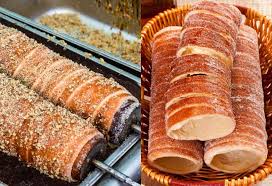
In autumn they used to cut the lambs, sterile sheep, rams. They used to join three or four families and cut shift beasts, dividing the meat, used in food preparation a bit more spicy to cover the taste of tallow. In some places, the meat was boiled so much until it detached from the bones and then was put in wooden containers with their gelatinous broth and let cool. It was served cold, especially in the cold days of autumn.
The festive menu included cakes as colaci, plăcinte, pancove, uscături and not to forget the Kürtőskalács, a regional dessert par excellence.
Bibiography:
Valer Butură, Străvechi mărturii de civilizaţie românească, Ed. Ştiinţifică şi Enciclopedică, Bucureşti, 1989.
Links:

